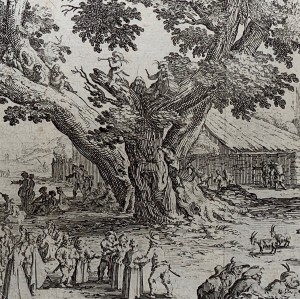Jacques Callot
Profile
Engraver
Callot was born in Nancy, Lorraine, to a father who was King-at- Arms to Duke Charles III. Originally apprenticed to a local goldsmith, Callot left Lorraine at the age of eighteen to learn line engraving in Rome. Moving to Florence in 1611, Callot attained great renown for his expert rendering of the town festivals staged by the Grand Duke Cosimo II. Prints such as " Florentine Fete" (1619) illustrate Callot's ability to render hundreds of figures in a unified composition - a skill that was probably influenced by the work of Bosch and Bruegel.
Callot was also interested in "grotesque" subjects, producing small plates of hunchbacks and beggars. The death of the Duke Corsino in 1621 caused Callot to lose his pension and thus return to Lorraine. Here he became a leading Mannerist artist producing his finest grotesque study "Gypsies" in 1622 as well as a number of more serious religious etchings. Called to work on "The Siege of Breda" and the "Capture of La Rochelle" in 1625, it was later in Paris that Callot produced some of his most notable topographical works. Callot later returned to Nancy in 1633 wher he completed his final great series the "Grandes Misères de la Guerre".
